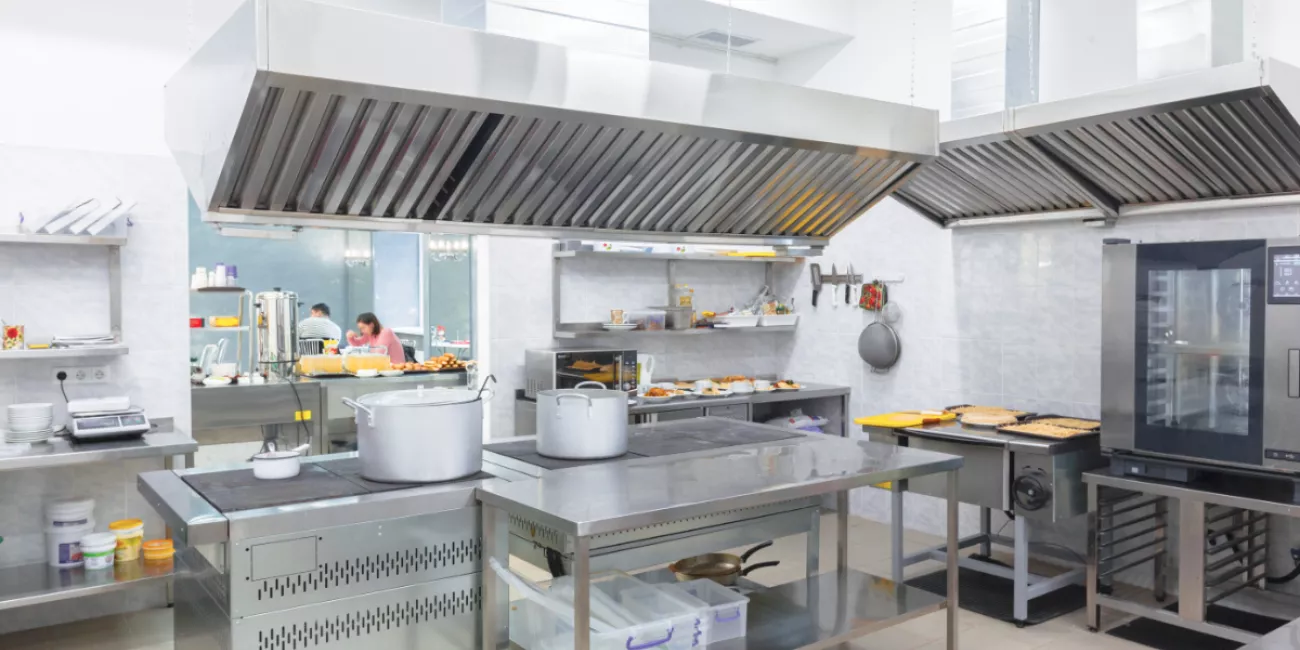What is a ghost kitchen?

A ghost kitchen, also known as a virtual kitchen, cloud kitchen, or dark kitchen, is a commercial kitchen space that is specifically designed for the preparation of food for delivery and takeout only. Ghost kitchens do not typically have a physical storefront or dining area, and customers typically order their food through third-party delivery apps or the restaurant's own website.
The concept of ghost kitchens has become increasingly popular in recent years as more and more people turn to online food delivery services. According to a report by the research firm, Research And Markets, the global ghost kitchen market is expected to grow at a compound annual growth rate of 25.2% between 2020 and 2025.
Main Advantages of Ghost Kitchens: Cost-Effective, Flexibility in Menu Offerings, Wider Audience Reach
There are several reasons why ghost kitchens have become so popular. One of the main reasons is that they are cheaper to set up and operate than traditional brick-and-mortar restaurants. Ghost kitchens typically do not require a physical storefront, which means that they can be located in less expensive areas and do not require expensive signage or decor. Additionally, ghost kitchens do not need to pay for staffing, utilities, and other expenses associated with a physical storefront.
Ghost kitchens also allow for greater flexibility when it comes to menu offerings. Because ghost kitchens do not have a physical storefront, they can offer a wider variety of menu options without having to worry about the cost of creating a physical space for each one. This allows ghost kitchens to test different menu items and concepts without incurring significant costs.
Another advantage of ghost kitchens is that they can reach a wider audience. Because ghost kitchens rely on online delivery and takeout services, they can reach customers in a wider area than a traditional brick-and-mortar restaurant. This can be especially beneficial for restaurants located in less densely populated areas.
Types of Ghost Kitchens: Standalone, Shared and Ghost Kitchen Networks
There are several different types of ghost kitchens, including standalone ghost kitchens, shared ghost kitchens, and ghost kitchen networks. Standalone ghost kitchens are standalone commercial kitchen spaces that are solely used by one restaurant. Shared ghost kitchens are commercial kitchen spaces that are shared by multiple restaurants. Ghost kitchen networks are networks of commercial kitchen spaces that are operated by a single company and are used by multiple restaurants.
One of the main challenges of ghost kitchens is the competition. With the rise of ghost kitchens, the competition for customers has become increasingly fierce. To stand out in this crowded market, ghost kitchens need to offer high-quality food, efficient delivery, and excellent customer service. Additionally, ghost kitchens need to be able to adapt to the ever-changing demands of the market.
Another challenge for ghost kitchens is the need for technology. Ghost kitchens rely heavily on technology, including online ordering systems, kitchen management systems, and delivery tracking systems. Without these systems, ghost kitchens would not be able to operate efficiently.
Despite the challenges, ghost kitchens are becoming an increasingly popular option for both established restaurants and new entrepreneurs. Ghost kitchens offer a low-cost, low-risk way to enter the food service industry and reach a wider audience. Additionally, ghost kitchens are well-positioned to take advantage of the growing trend of online food delivery.
In conclusion, a ghost kitchen is a commercial kitchen space that is specifically designed for the preparation of food for delivery and takeout only. Ghost kitchens offer a low-cost, low-risk way to enter the food service industry and reach a wider audience. With the rise of online food delivery services, ghost kitchens are becoming an increasingly popular option for both established restaurants and new entrepreneurs. However, ghost kitchens need to be able to stand out in a crowded market, offer high-quality food, efficient delivery, and excellent customer service, and adapt to the ever-changing demands of the market.
